What To Do to Get a Blurry Background aka. Shallow Depth of Field
Article by Colette Nichol, Solo Filmmaker and Story Strategist
Looking for a blurred background video? You’re in luck. In seven minutes, I can show you exactly how to get a blurred background in the next video or photograph you capture. It’s pretty darn easy.
Read the post or watch the video to find out how.
And, if you want to understand how shallow depth of field works and become a legit master of throwing your background out of focus, then read this entire post and then put it into practice right away!
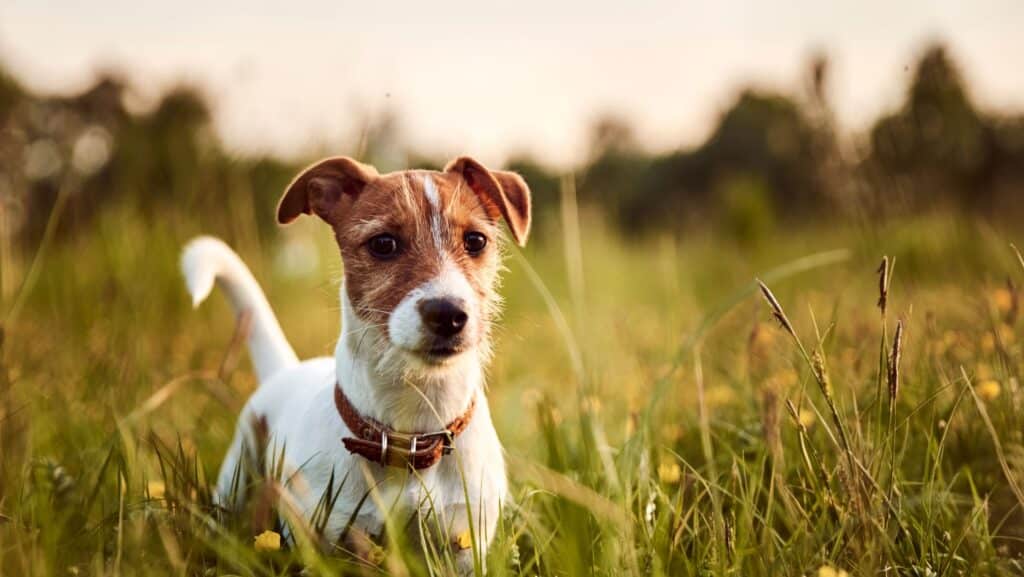
Getting a Blurred Background
Have you ever taken a picture of someone that accidentally looked gorgeous?
The lighting was perfect. Their smile was sparkling—or at least not totally scary. There were no random poles jumping out of their heads. Or herbs stuck in their teeth.
And…And…and…
And the background was a beautiful creamy blurry gorgeous, out-of-focus dream.
Which made your subject POP even more!
Yup, but how did you do it?
Well, in this video, you’re going to learn the four things that you need to remember if you want to throw your background out of focus whenever the hell you want.
That’s right; you’ll be the boss of those backgrounds once and for all! Cool. Let’s watch!
Table of Contents
- How to Get a Blurred Background
- Tips to Get a Blurry Background in Your Videos and Photos
- Blurred Backgrounds in Photography
- Shallow Depth of Field vs. Adding Background Blur in Post
- Blur Video Background for Filmmaking and Videography
- Easy Online Video Editor to Blur Backgrounds
- Questions About Blurring Your Backgrounds
Video: How to Get a Blurred Background
Tips to Get a Blurry Background in Your Videos and Photos
Here are a few things that’ll help you:
1) Get your subject far away from the background.
2) Use a wide aperture (low f-stop number) like f/2.8 or wider (lower number) to get a blurry background.
3) Use a longer lens i.e. a lens that’s more “zoomed in” to get a blurrier background. For a crop-sensor camera, go with 70mm or longer. For a full-frame camera, go with 50mm or longer.
4) Get closer to your subject to get a blurrier background.
Yes, it’s actually that easy! Filmmaking and video creation don’t have to be hard!
Blurred Backgrounds in Photography & Video
How to Blur the Background of a Picture
There are two ways to blur the background in a photograph:
1) While shooting the photograph, you can create a blurred background in camera.
2) When editing the photograph.
You’ll get more beautiful results if you create a blurred background by using the right lens and camera settings. However, sometimes that’s not possible.
Shallow Depth of Field, i.e. Creating a Blurred Background in Camera
Creating a blurred background by selecting the right focal length for your lens and using the right camera settings is called creating a shallow depth of field.
Focal Length: Focal length refers the length from the optical center of a lens from the focal plane. Or you can think of it as how zoomed-in your lens is.
When aiming to create shallow depth of field, it’s easiest to use a longer lens.
For a full-frame camera, use at least a 50mm lens. But an 80mm portrait lens will give you shallower depth of field. From a crop sensor camera use a 50mm lens or longer.
The images below or shot on a crop sensor camera with a crop fact of 1.6x.
See how the 18mm lens distorts the face (which is kinda cool looking!) while the 100mm lens makes the face feel more expansive and provides shallow depth of field.
F-Stop: To get shallow depth of field, you need to open up your aperture nice and wide.
The aperture is the opening in the lens that let’s light into the camera. You can have it open wide or narrow. To open up the aperture you set your f-stop number to a lower number. Typically f/2.8 is a good place to start to get shallow depth of field.
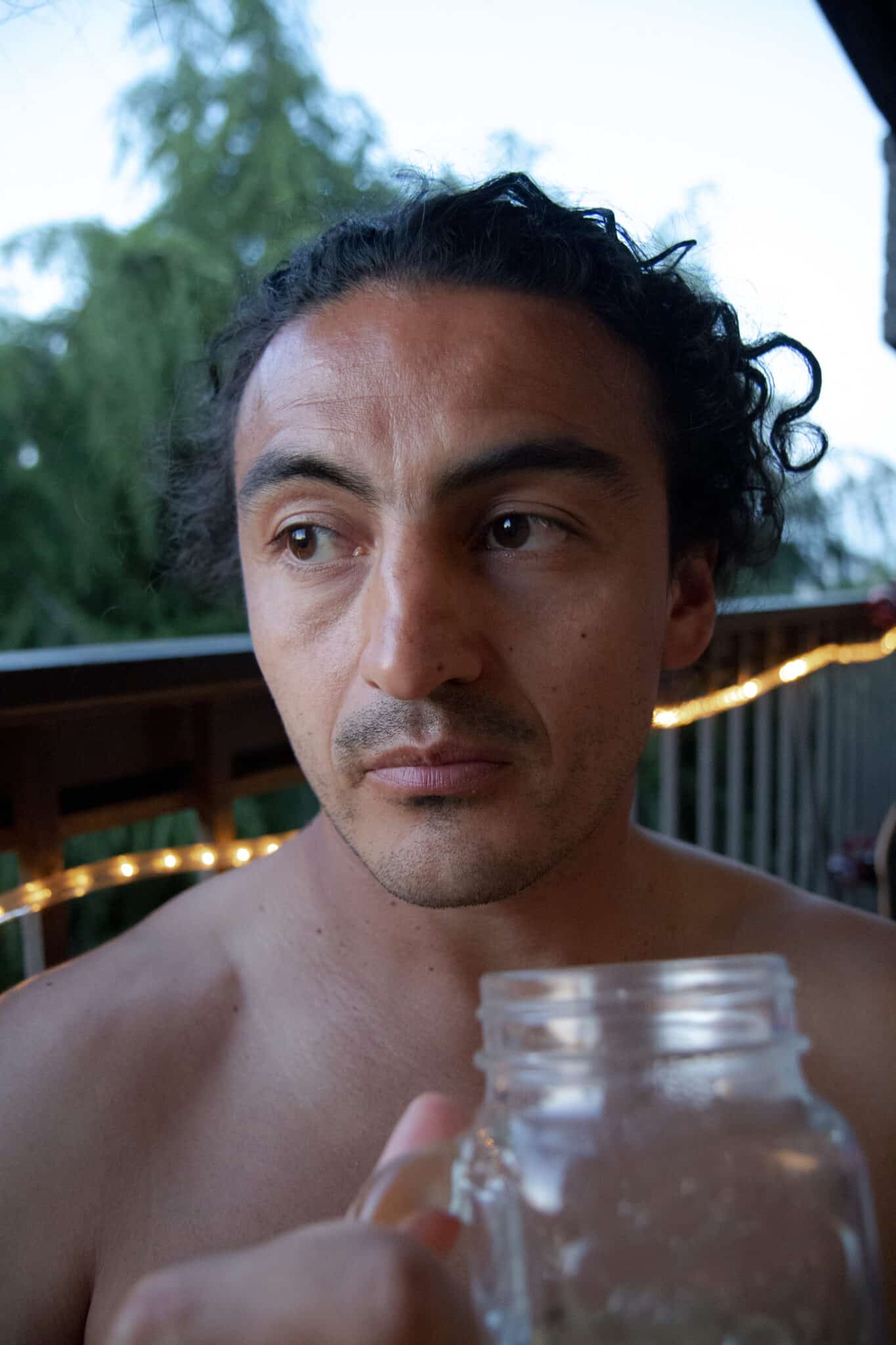
focal length: 18mm on crop sensor camera with 1.6x crop factor – aperture: f/2.8
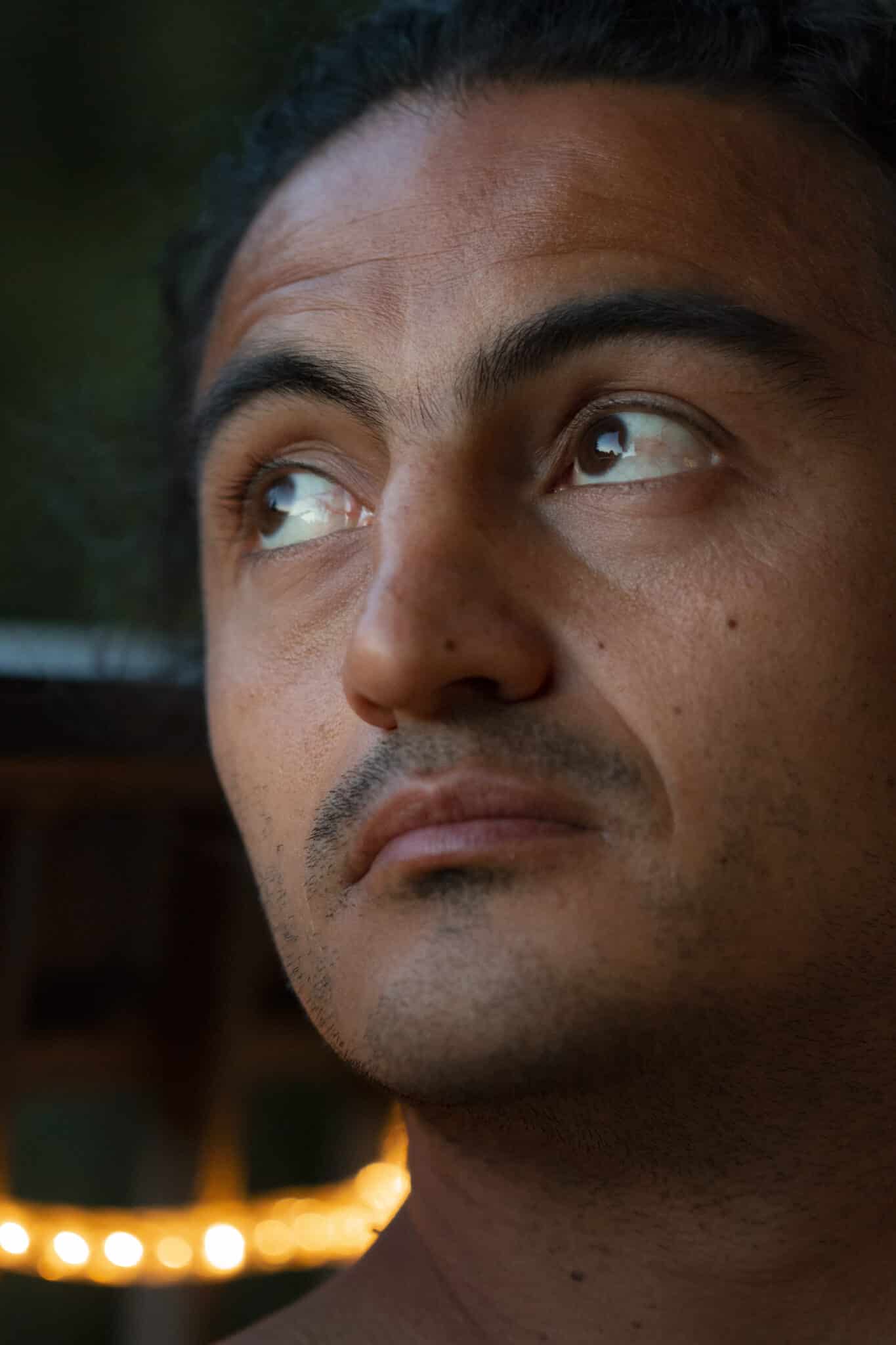
focal length: 100mm on crop sensor camera with 1.6x crop factor – aperture: f/2.8
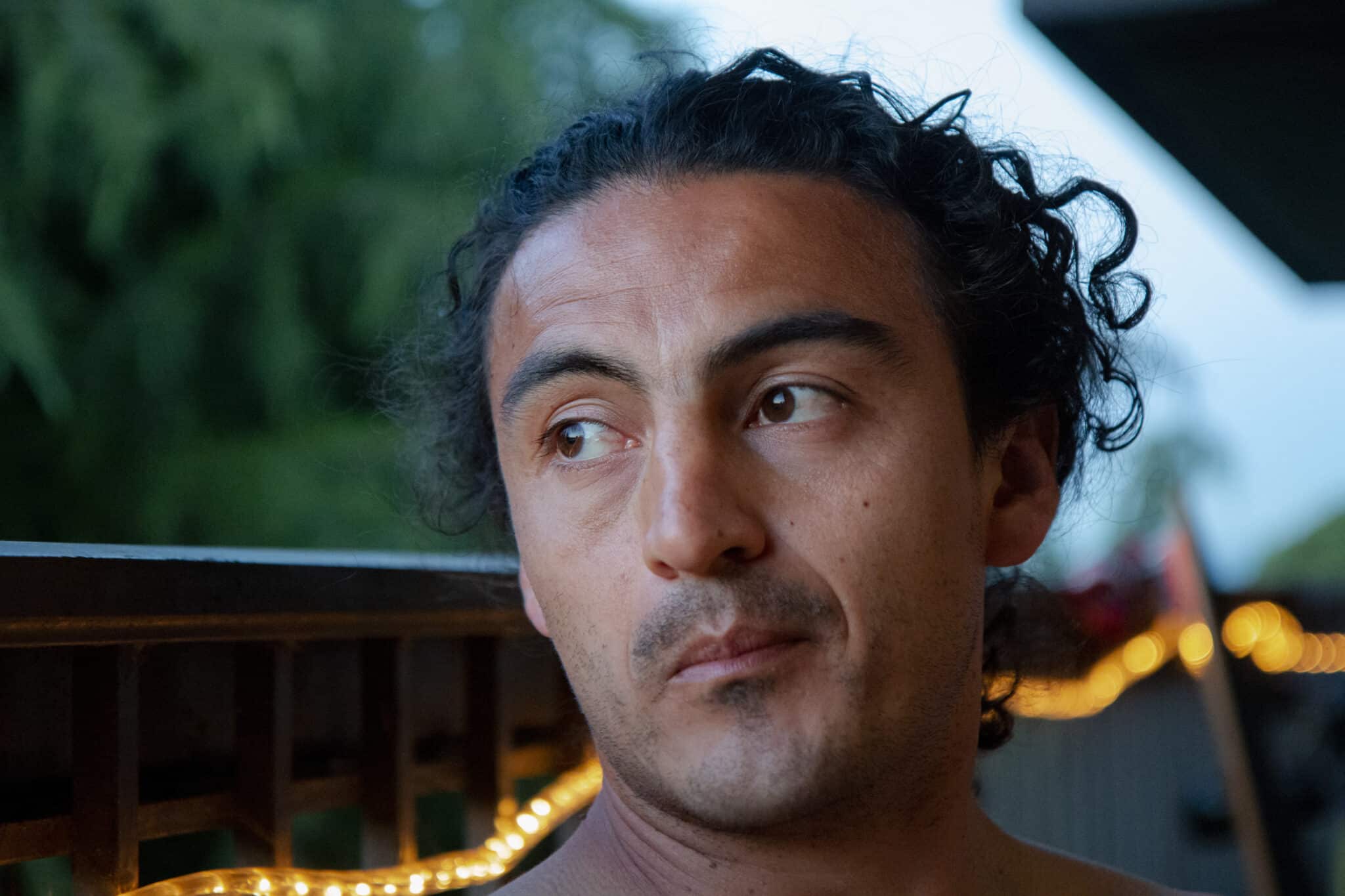
focal length: 28mm on crop sensor camera with 1.6x crop factor – aperture: f/2.8
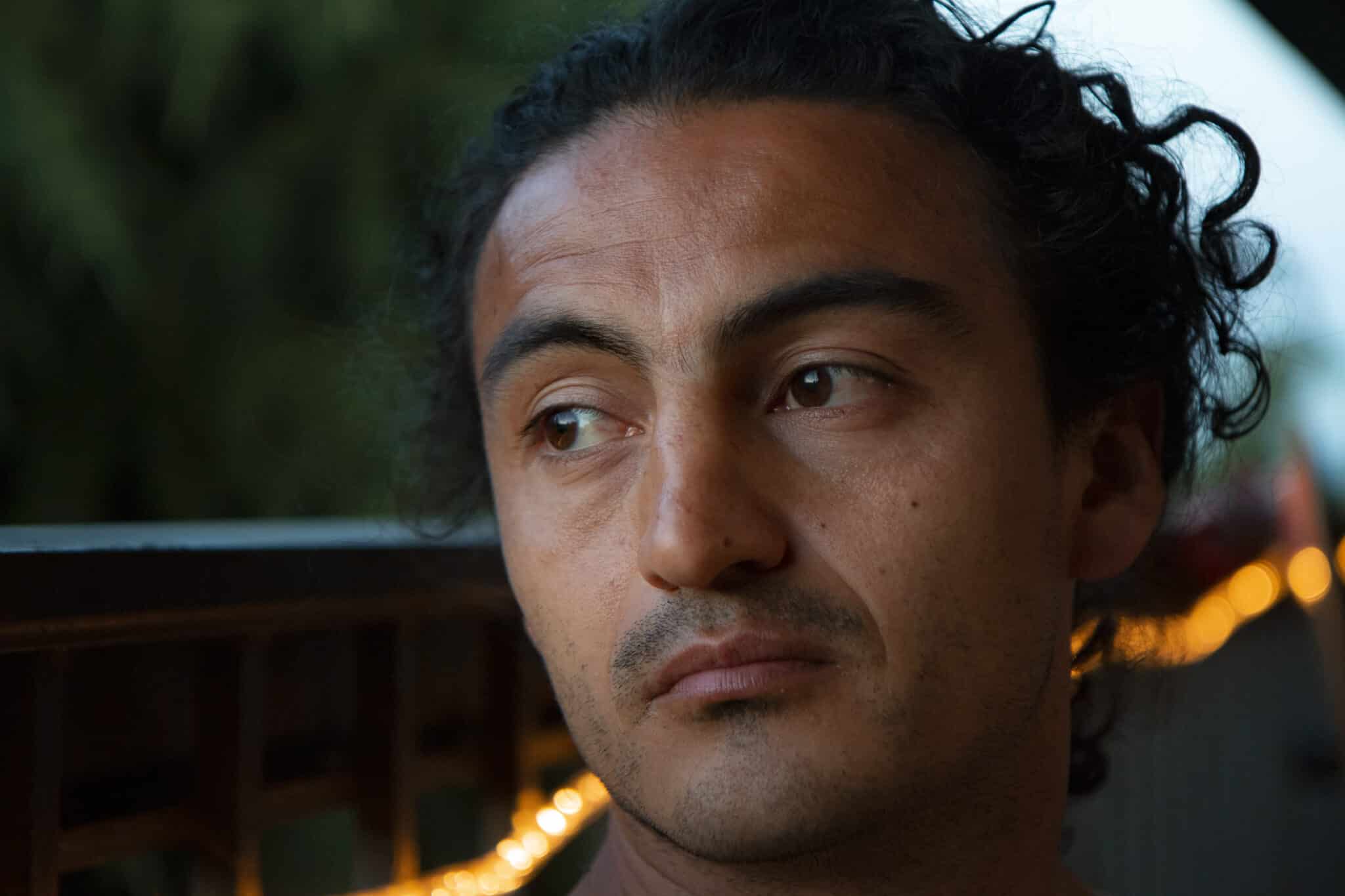
focal length: 55mm on crop sensor camera with 1.6x crop factor – aperture: f/2.8
Shallow Depth of Field with iPhone
Depending on the phone you’re using, you’re probably not actually going to be creating true shallow depth of field.
Instead, you’ll be creating an in-camera digital replication of what shallow depth of field looks like. You may not get clean edges around your subject. And you won’t likely get the complimentary distortion that comes from using a legit camera lens.
However, in a pinch, it’ll do.
Go into your camera app and look for the portrait setting. This option is where you’ll be able to take a picture with a blurred background.
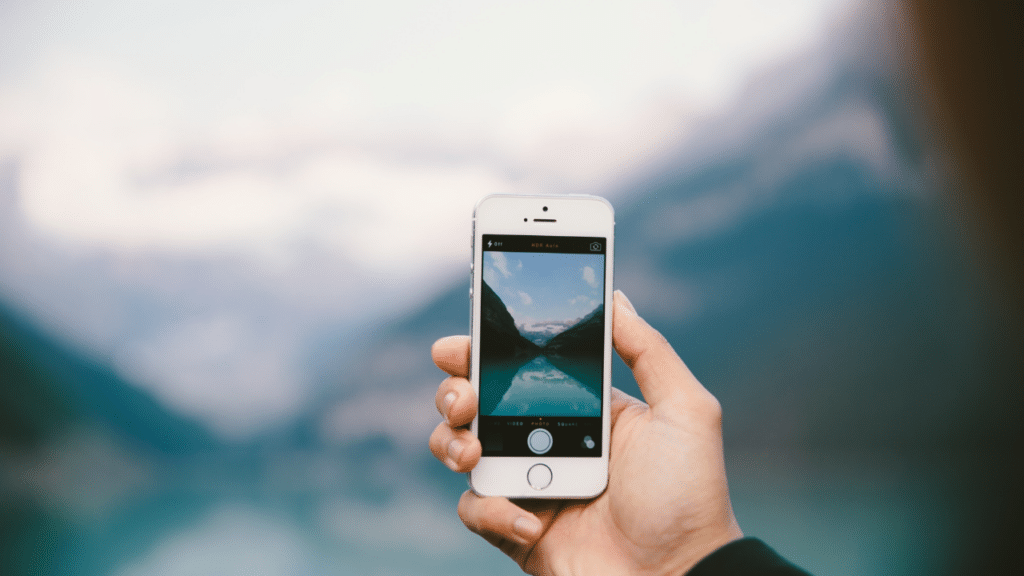
How to Blur a Photo Background with Apps and Editing Tools
You can blur the background of your photo using a myriad of editing tools.
Some phones even help you do it using their native photo editing app. However, these are the easiest ways that I’ve seen to create background blur for a photo using an app or editing tool.
CANVA
I use Canva all the time, and it’s one of the easiest-to-use design tools online.
For the price, I think it’s one of the best tools you can get if you’re someone who has to create a lot of content. You can get a free Canva account and then later upgrade if you need access to some of the premium features. The basic photo editing tools are great for content creators. This is not the tool to use if you’re a pro photographer. But if you’re a hobbyist, it can be a fun tool to use.
Watch the Tutorial Video on How to Blur a Background in Canva:
PHOTOSHOP
If you already have Photoshop and are designing a custom image or design, then you might want to blur the background in Photoshop and keep the whole project in one place.
FOTOR
If you’re using a Mac, you can purchase Fotor for $49 and use their AI-powered tools to blur the background of your photo with relative ease.
Shallow Depth of Field vs. Adding Background Blur in Post
FOR PHOTOGRAPHY AND FILMMAKING
Creating shallow depth of field in a photograph or video footage isn’t just about blurring the background in a uniform manner.
Other effects occur when you use your camera settings and lens to create shallow depth of field.
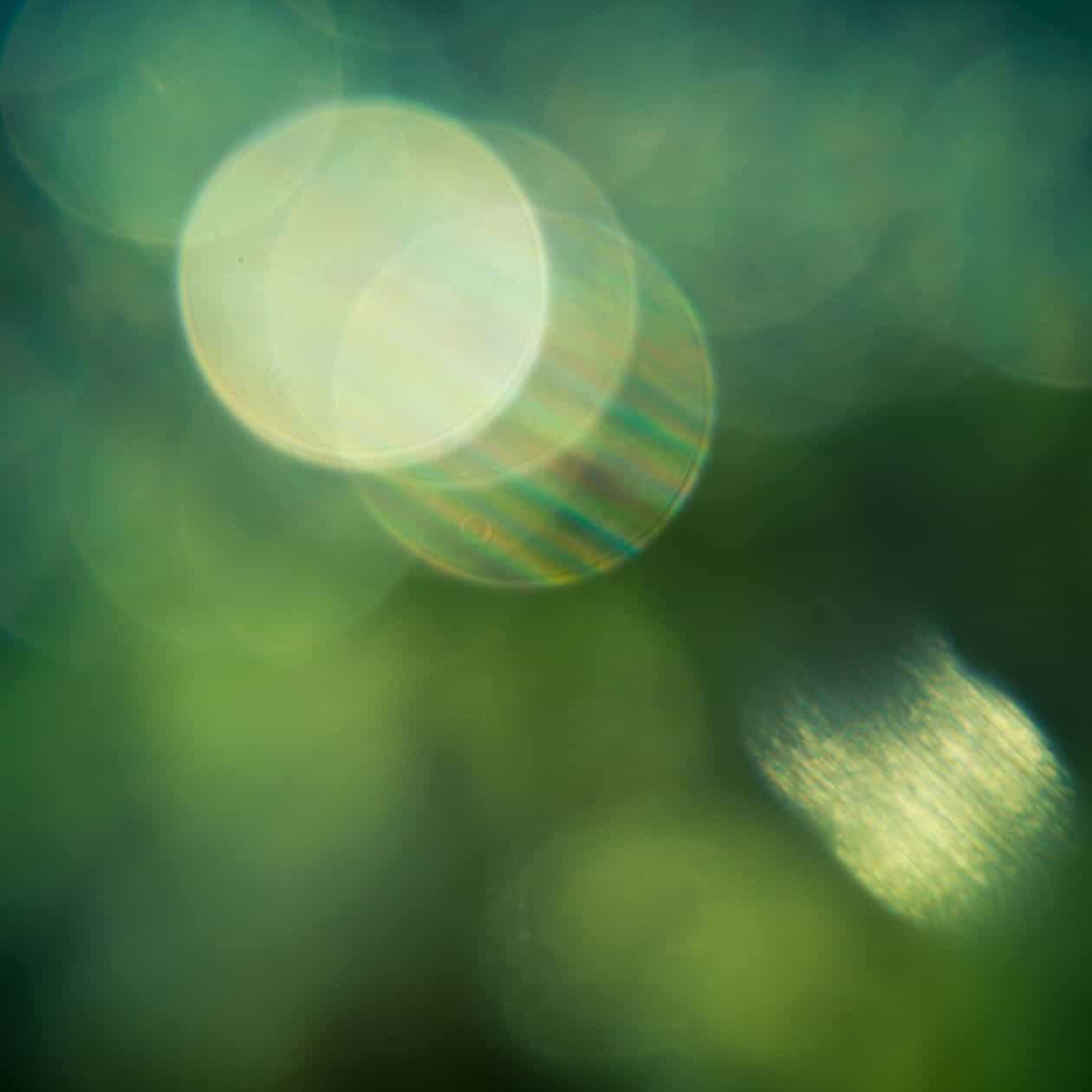
Bokeh = soft circular light reflections
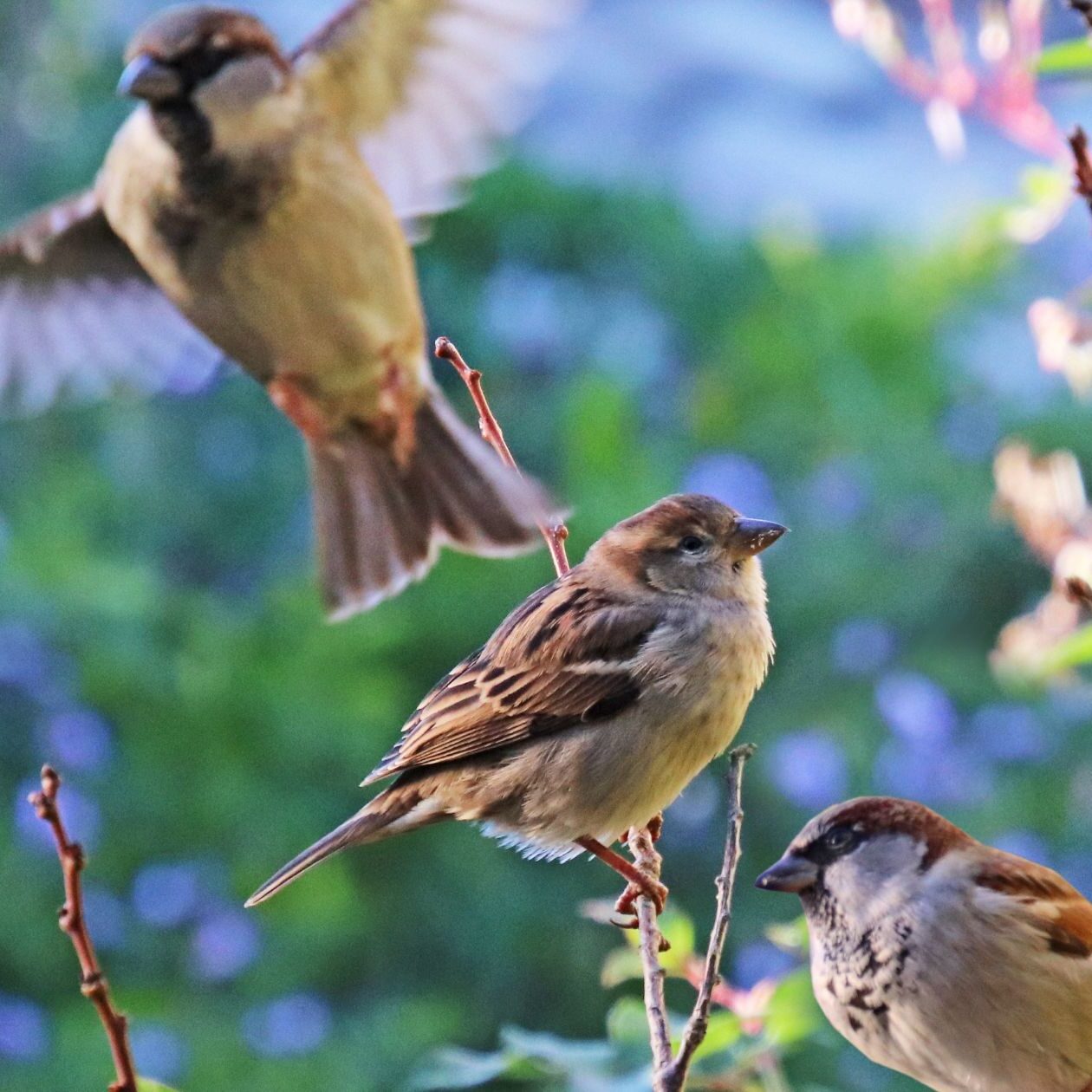
Compression causes the background bird to appear closer than he is
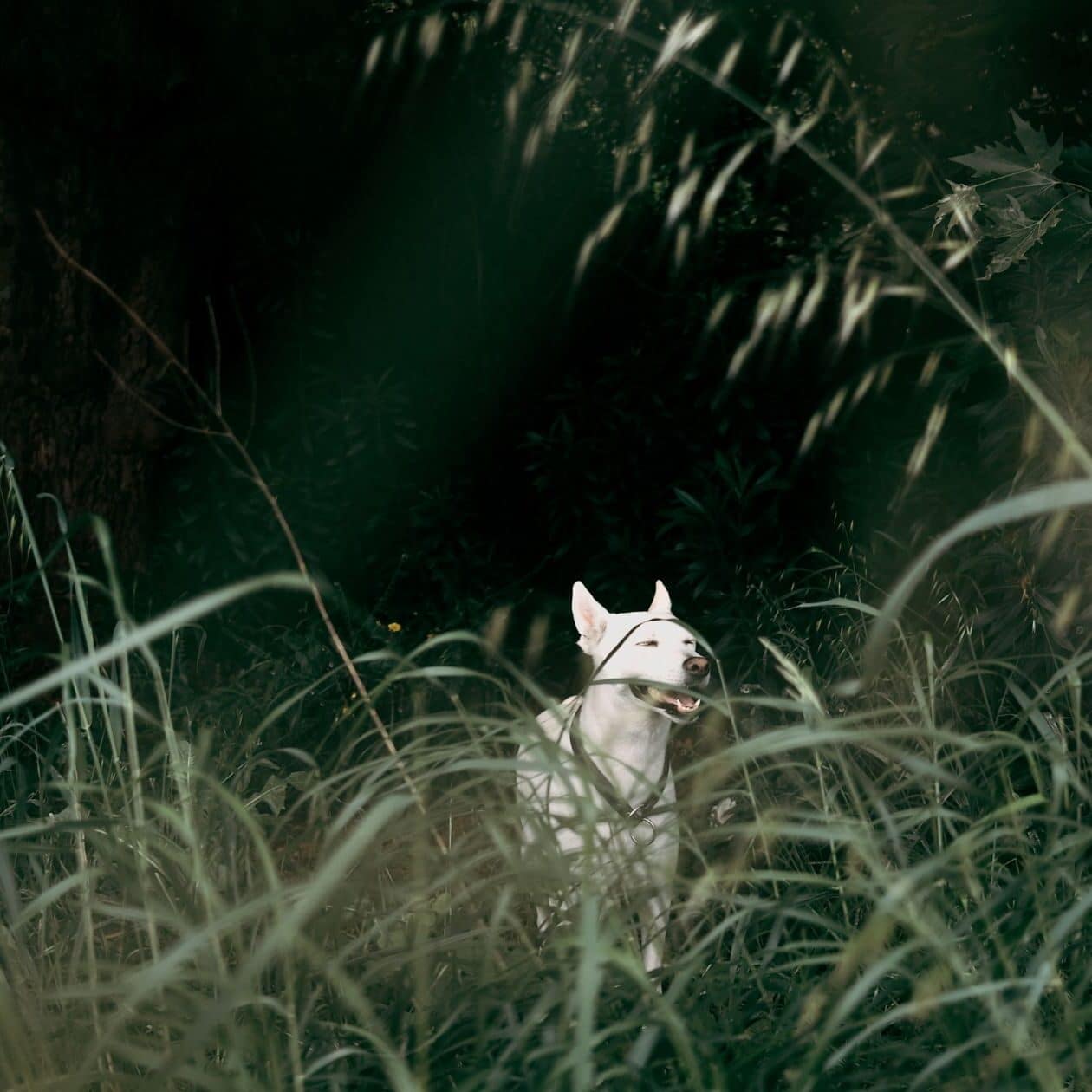
You can use an out-of-focus foreground to frame a subject and soften the image
1. BOKEH:
Bokeh refers to the quality of your background blur and the softness of circular light reflections created by using a particular lens and f-stop settings.
If you are filming something with lights in the background, when you capture an image with shallow depth of field, you’ll turn those lights into beautiful bokeh. Any lights and shiny objects will transform into sparkling globes of light in the background.
As it stands, you can’t achieve this with AI tools.
When it comes to getting “good bokeh,” this depends on the quality of the lens you’re using.
2. COMPRESSION:
When you shoot a subject with a long lens i.e. a lens that’s more zoomed in, you create a sense of compression.
What does that mean? Compression in an image is where the distance between two objects appears closer than they are in reality.
One of the reasons you get a beautiful image when you shoot a portrait with an 80mm lens is due to the effects of compression. The lens distorts the image, but it does so in a way that is pleasing to the eye.
3. ARTISTRY and FOCUS FALL OFF:
When you capture a blurred background in-camera, you can be more selective about how exactly you want the focus to fall off and where you want to set your area of critical focus.
I might want to put some plants near a subject and then capture the image so that the plants are out of focus and frame the subject’s face. This is going to be much easier to do (and I’ll have more control) if I set up this shot in camera rather than trying to do it in post.
4. EASIER FOR VIDEO and FILMMAKING:
Ain’t nobody got time to create shallow depth of field in post with your subjects moving around like crazy.
I sometimes create a blurred background effect with DaVinci Resolve. But I only do this on talking head videos because the subject is static, so I can easily pull it off. But if you’re filming action, you usually don’t want to mess around with your depth of field in post. It’s time-consuming and it also uses up a lot of processing power and can slow down your edit and your rendering times.
Blur Video Background for Filmmaking and Videography
How to Create a Blurred Background for a Video in Camera
If you want to get delightful buttery background blur in your videos, then you need to do it IN CAMERA!
Sorry for the caps, but I feel strongly about this. Being able to pull off shallow depth of field is an absolute must if you’re a videographer. As a cinematographer, this is a basic camera 101 skill.
CREATING SHALLOW DEPTH OF FIELD FOR YOUR VIDEOS
1 – FRAME SIZE & FOCAL LENGTH:
First, you have to know what frame size and focal length you’re using. It’s relatively easy to achieve shallow depth of field when filming a medium shot or tighter. But don’t expect to be able to get a blurry background when you’re filming a wide shot.
2 – LONG LENS:
If you have the option, place yourself further from the subject and use a longer lens. 50mm or longer. And take into account that you’ll need a longer lens when using a crop sensor camera versus a full frame camera.
3 – WIDE OPEN APERTURE:
Open up your aperture to f/2.8 or more. You may need to be wide open at f/1.8 or f/1.4 to get the shallow depth of field you’re looking to achieve. Usually, you’ll select the lowest f-stop your camera has. Doing this lets MORE light through your lens and into the camera, so you’ll need to adjust your camera settings to compensate. If you’re trying to get shallow depth of field outside on a sunny day when shooting video, you’ll need to use an ND filter.
4 – ISO:
Reduce ISO to compensate for the wide-open aperture.
5 – ND:
Because your lens is wide open, you may need to reduce ambient light or add an ND filter to compensate.
6 – FOCUS:
Great, now that your exposure is correct, set your focus. If you’re focusing on the eyes, use focus peaking if possible and get the eyelashes in focus.
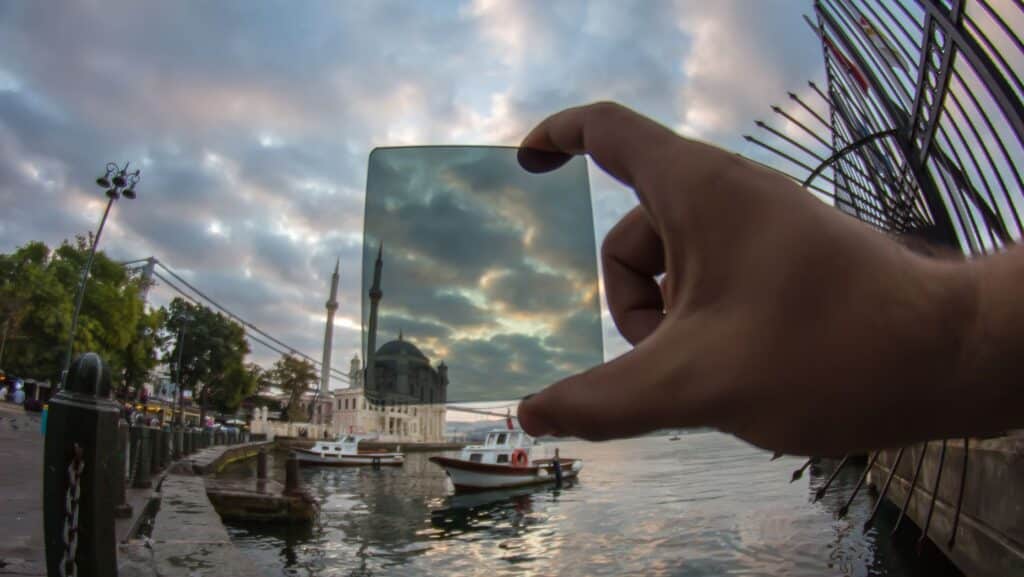
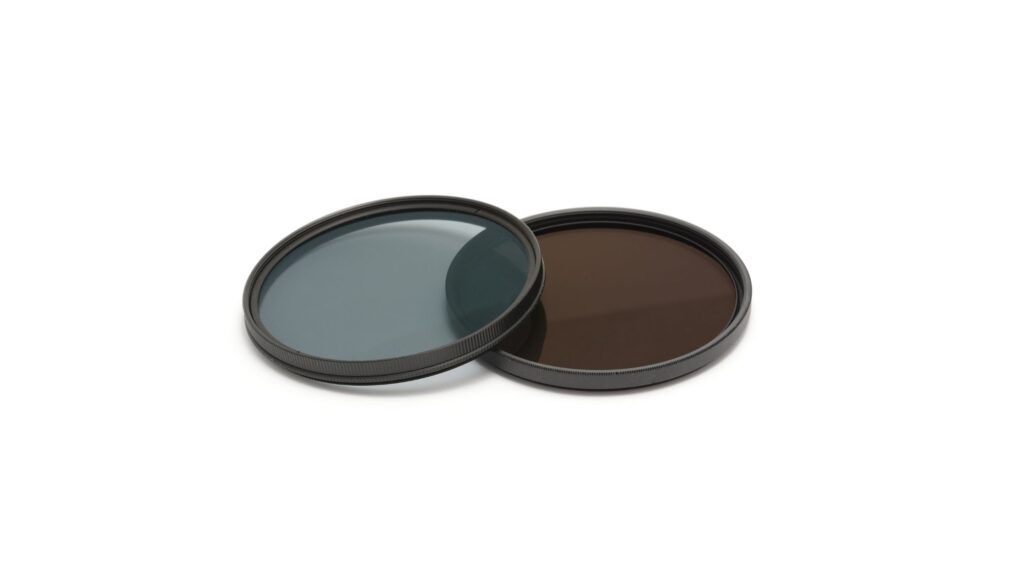
Using an ND filter allows you to reduce the light entering the lens SO THAT you can open your aperture nice and wide and achieve shallow depth of field i.e. a blurred background!
📷 Related Post: Exposure Videos for Video, Filmmaking, and Photography
Easy Online Video Editor to Blur Backgrounds
How to Blur the Background of Your Video in the Edit – Premiere and DaVinci
If you want to blur the background of your video to create more emphasis, you can do that with relative ease in Premiere Pro or DaVinci.
However, it’s not the same as capturing in-camera shallow depth of field. You won’t get the same effect, and it won’t be as beautiful. That said, sometimes adding a little bit of extra background blur can make an interview or talking head video pop.
This video is for Premiere, and once I get around to it, I’ll make one for DaVinci as well.
How to Blur Moving Faces in the Edit – Premiere and DaVinci
Sometimes you need to cover up or blur a face so it’s not visible.
If you aren’t legally allowed to use someone’s image, you’ll need to blur their face and make sure the blur keeps moving as they move! This is a super annoying activity, but as long as you’re patient is very doable.
Questions About Blurring Your Backgrounds
How do I blur the background of a photo?
To blur the background of a photo in the edit, use a tool like Canva, Fotor or Photoshop to select the area that you want to have in focus and then throw the background out of focus.
You can adjust the level of blur as well as where you want to apply the blur.
To blur the background of a photo in-camera, set your f-stop to f/2.8 or lower, use a long lens, and move close to the subject.
What photo editing app can I use to blur the background layer?
You can use Canva, Fotor, Photoshop and many other editing apps to blur the background of your photo.
How do I blur the background of a video?
To blur the background of a video, you can use Premiere Pro, DaVinci, FinalCut, or Adobe After Effects. Each program has a different set of steps. However, the principles are roughly the same. First, you select the area that you want to have out of focus. Then you add gaussian blur to that area. Finally, you adjust the strength of the gaussian blur to create the effect that you want.
What is the best video editor to blur the background?
All video editors can blur the background with ease. However, in my opinion DaVinci Resolve is the best video editor for blurring the background. It’s easy to use and to fine-tune the adjustments.
How to do blurred background on iPhone?
To create a blurred background for a video on your iPhone, you should use Filmic Pro and an external lens that’s 50mm or longer. Set your f-stop manually to a low f-stop. If you have a new iPhone Pro, you can also shoot video in cinema mode, which should allow you to create a digital version of shallow depth of field.
What is a blurred background called?
A blurred background is called shallow depth of field if it has been created in the camera. One may also refer to the quality of a blurred background as the image’s bokeh. If you created a blurred background in post, it’s not actually shallow depth of field. Then you’d simply call it a blurred background.
What is a free online photo editor to blur the background?
You can create a blurred background for your photo with Canva.
More Filmmaking Articles:
- 17 Filmmaking Mistakes that Make Low-Budget Movies Look Cheap
- Top Filmmaking Basics Every Beginner Needs to Know
- Cinematic Lighting for Filmmaking
- What is a Master Shot in Filmmaking?
Learn Filmmaking and Get the Gear Guide
If you’re interested in learning filmmaking, check out the Solo Filmmaking Mentorship Program I created for aspiring filmmakers and video creators. It usually goes live once per year. So I recommend getting the Story Envelope Filmmaking letter which comes out a couple of times per month. That way, you can get filmmaking tips for free and find out when the filmmaking course is going live again.
Also, before you go, grab the Solo Filmmaking Gear Guide and Checklist for Beginners.

About the Author
Hi! I’m Colette Nichol. I’m a solo filmmaker and story strategist based out of rainy Vancouver, Canada. I’ve been making videos and micro films for small businesses and global brands since 2014.
Plus, I LOVE to help aspiring filmmakers pursue their dreams and start making films. This blog is designed to help you gain the knowledge you need to become a filmmaker.
If you want more, get on the waitlist for the Story Envelope Academy Solo Filmmaking Mentorship Program. It opens up one time per year and is the best way to become a filmmaking or video pro fast!
CLICK HERE to get on the solo filmmaking mentorship waitlist.